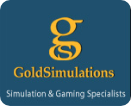Integrating our Simulation into Managerial & Business Economics
At your "option", you can select simulation game
assignments & simulation
exercises that fit your time frame and curriculum level. The
game assignments ask students to take information from the games and evaluate the demand and cost relationships embodied in the games, using either statistical techniques, like regression analysis, or other non-statistical methods. The results of the student analysis can then be applied to making more effective decisions in the games.
All the data from the simulation games can be exported to "Excel", making data collection unnecessary, and graphical techniques such as trend-line analysis or regression easily accessible.
The major difference between simulation games and exercises are that for
simulation games students compete individually or in teams using tools of economics, making decisions to maximize profits whereas for
simulation exercises students observe what is happening in
pre-set games and answer a series of multiple choice questions or problems to learn a specific topic such as demand, equilibrium, price elasticity, production, costs and more. Both are automatically graded.
LINKS BELOW contain example course outlines on how the game is integrated:
OPTION 1 – Utilize as a capstone event
-
-
- Near end of the semester set up a practice game played individually followed by a simulation competition where student teams compete against each other.
- Students have a real opportunity to apply the economic theories and tools of analysis that they have learned all semester.
OPTION 2– Utilize throughout the Course
-
-
- Early in the semester assign simulation games and exercises; advantages are:
- Students have the opportunity to apply economic theories and tools of analysis as they learn them in class.
- Integrating simulation games with your course lectures and reading material is a very effective learning approach.
OPTION 3 – Mix of options 1 and 2
For above options, you can select games of different levels:
Simplest Level
-
-
- 2 to 4 decisions (price, advertising, production & plant size); stable macroeconomy; no random events.
Advanced Level
-
- 5 to 8 decisions (price, advertising, production, plant size, product development, e-commerce, training & process improvements); changing macroeconomy; random events.

